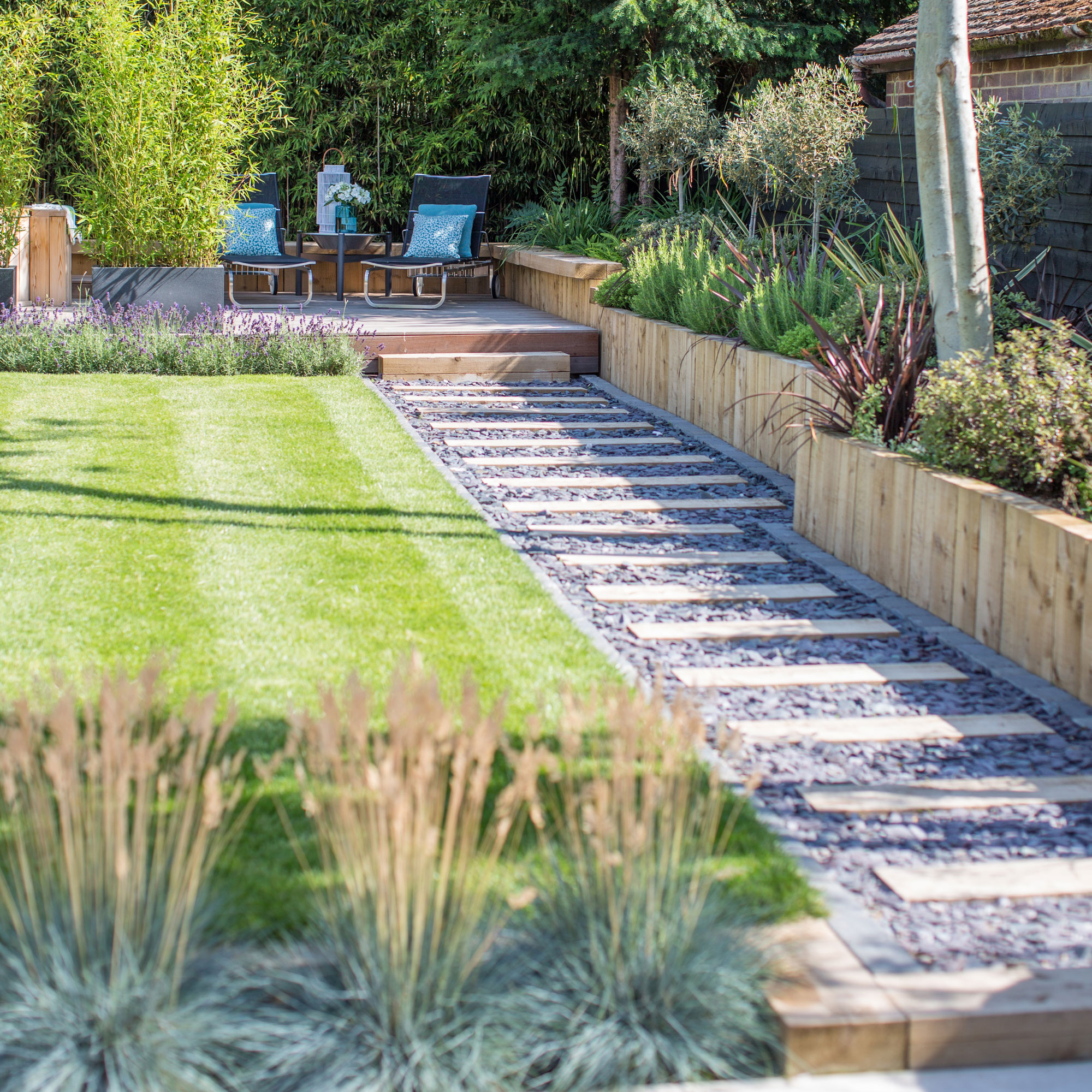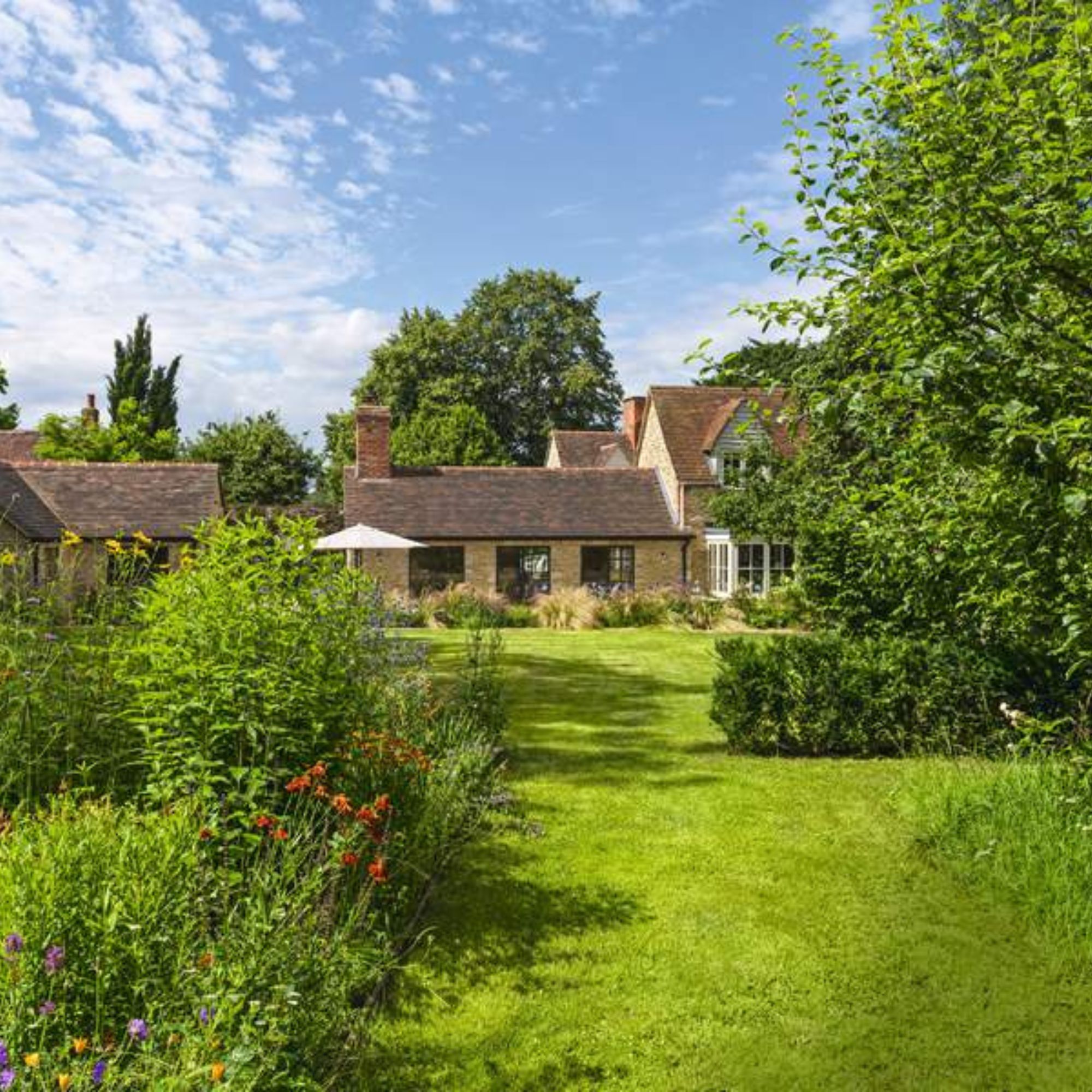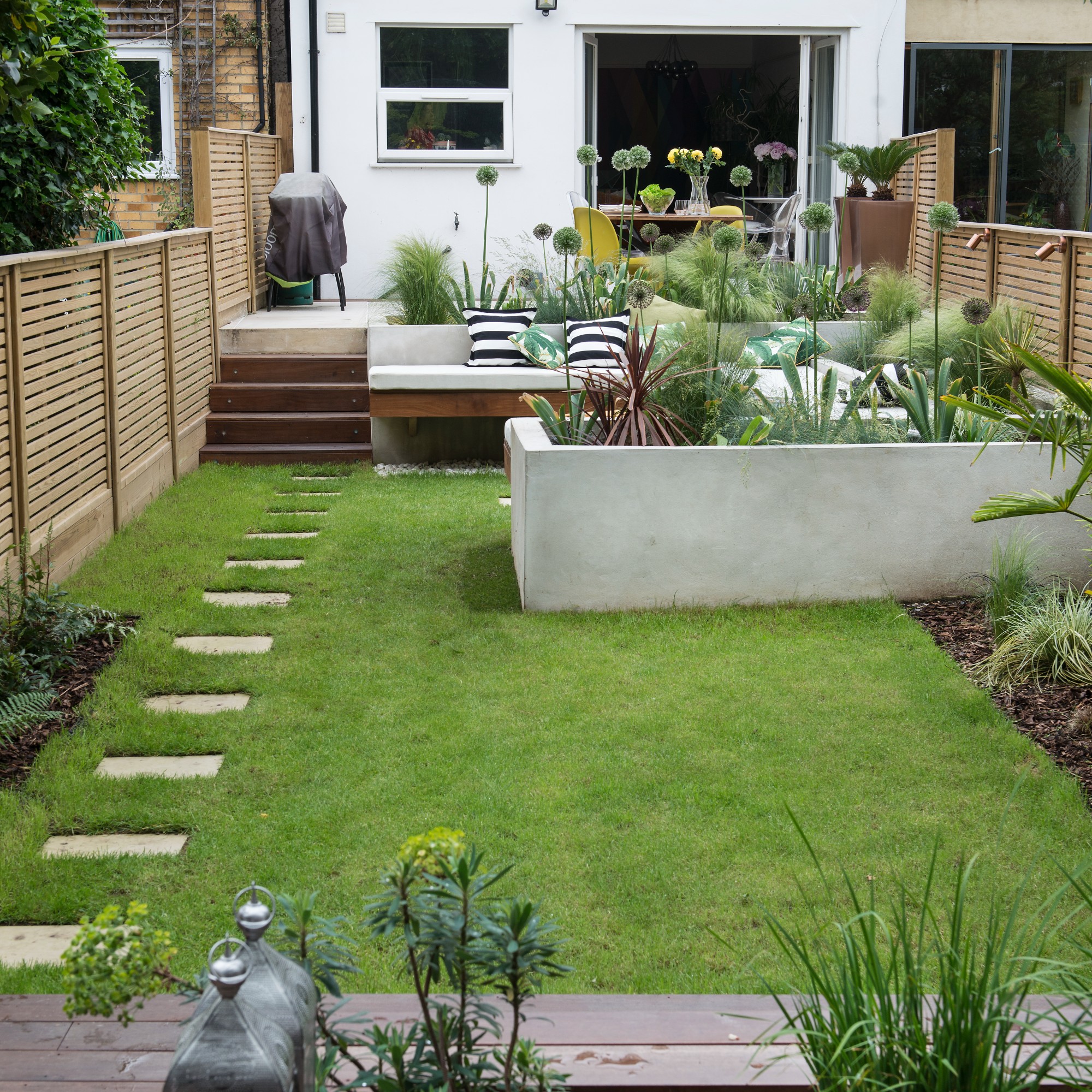
We all want our garden lawn to look its best. But you might not be aware that something called thatch could be causing a whole host of issues.
In case you’re not already aware, thatch is essentially the layer of organic matter that sits just above the soil’s surface, at the base of its stems. It’s typically made up of side shoots, dead grass, moss and other lawn debris and it can accumulate over time, thus preventing essential nutrients and water from getting into the soil. Because of this, dethatching is integral to lawn care for keeping your soil and lawn in good condition.
How to dethatch a lawn guide
‘A small amount of thatch is actually good for your lawn, helping to strengthen the structure,’ explains Calum Maddock, Gardening Expert at HomeHow.co.uk. ‘But if your lawn is looking a little brown or it feels particularly spongey and you find rainwater is being held on the surface of your lawn, then it probably needs dethatching.’ Dethatching is simply the name given to the removal of the layer of thatch on your lawn.
There are a few other indicators that your lawn may need to be dethatched, which we will explain in more detail below. But, essentially if your grass is losing its healthy green colour, looks to be thinning and bare spots are appearing, or the grass blades are especially weak, you might want to think about dethatching your lawn.
Keep reading to find out exactly how to go about this, as well as the expert’s top tips to have your lawn ideas looking their best in no time.

What you’ll need
- A rake; try this Xclou Lawn Thatching Rake from Amazon.co.uk
- Or a mechanical/powered scarifying machine; the Bosch Power Corded Raker & Scarifier could be a worthy investment
- Grass seed; this Pronto Seed Grass Seed is a great price
- Fertiliser; try the Miracle-Gro EverGreen Natural 4 in 1 Lawn Care from Argos
- A lawn aerator tool (optional); this Walensee Lawn Spike Aerator has over 1000 5-star reviews
- A watering can/hosepipe
Step-by-step
1. Prepare your lawn
Before you start, you’ll want to ensure that the soil is moist but not wet. It being particularly wet can cause further damage to the lawn.
‘If your grass is really long or you’re planning to seed your lawn, you may find it useful to mow your lawn first,’ according to Calum. However, ‘it’s best not to cut the grass too short, as you’ll find it takes longer for the lawn to recover after dethatching.’
2. Start raking
If you have a particularly expansive lawn, ‘the easiest way to dethatch a large area is to use a mechanical or powered scarifying machine that can both rake and aerate your lawn,’ advises Calum. ‘This will save you a lot of effort and these machines automatically bag the thatch, you won’t need to spend time collecting the debris afterwards.’
These machines can be rather pricey, so if you’re looking to go down that avenue you may want to rent one initially, to see if it’s the right tool for you. But for most gardens and smaller gardens at that, a traditional rake will work just fine. A wire leaf or spring-tined rake are both great options.
The experts all agree that raking your lawn in a criss-cross pattern is key, while ensuring that you are making parallel passes each time. As you are raking, push the rake down into the grass so that it will reach the thatch layer underneath. ‘As soon as you start doing this you will notice any moss coming up and any old grass coming up in a yellow mess and that's exactly what you want to do to take it all out,’ says Gardening Expert Jack Stooks, while speaking on behalf of Alt Index.

3. Collect the thatch
Once you’ve finished raking you’ll need to collect the debris. You can either ‘use a normal garden rake for this or a wide grass rake with curved teeth to speed things up,’ Calum admits.
It’s handy to have a garden sack or wheelbarrow nearby to gather the thatch as you go. And if you compost, you can also add your thatch to this.

4. Aerate the lawn (optional)
If you’ve noticed that your garden has also had lawn drainage issues after a heavy rain shower, this could be the ideal time to aerate your lawn. While this is an optional step, Calum does admit that ‘unless you’re using a machine that aerates as you dethatch, then you’ll want to go over your lawn with a fork or aerating tool afterwards. By putting small holes into the ground, you’ll improve the drainage of your lawn.’
5. Finish by fertilising and reseeding, if necessary
If your lawn now looks a bit patchy or bare, you can finish by fertilising the soil and reseeding anywhere it looks a bit patchy.
You’ll also want to ‘ensure that you water your lawn to help it recover from the stress of dethatching,’ Craig Morley, Budget Seeds’ Gardening Expert, adds.

FAQs
How do I know if my lawn needs dethatching?
There are a few different ways that you can determine if your lawn needs dethatching. ‘Thatch over one inch can be identified by walking across your lawn,’ affirms Tom Clifford, Director of Gardenstone. ‘If it feels spongy or if it bounces back then this means the thatch needs removing. It can also be identified through grass characteristics like a change of colour and poor growth.’
Additionally, ‘you can determine if your lawn needs dethatching by digging out a small piece of turf and measuring the thatch layer,’ Craig explains. ‘You can also use your finger to measure the thatch layer. If your finger can reach into the thatch layer by more than half an inch, you probably need to dethatch your lawn.’
Why is it important to dethatch?
Dethatching is important to keep your soil and lawn in good condition. This is because ‘thatch can prevent vital nutrients, moisture and oxygen reaching your soil. And this can make your lawn susceptible to diseases, pests and overall poor grass quality,’ Tom concludes.
Dethatching your lawn also allows you to get any bare or yellowed patches filled in and look considerably better before summer arrives.
What is the best month to dethatch a lawn?
All of the experts agree that spring – and in particular, April – is the best time to dethatch a lawn. ‘However, this is only under certain conditions, as the weather has to be fairly dry and warm when dethatching,’ Tom warns. ‘If it’s a cold spring you may wish to dethatch at the end of September instead.’
April tends to be the best month because the grass still has time to grow and thicken before summer.




!["[T]he First and Fifth Amendments Require ICE to Provide Information About the Whereabouts of a Detained Person"](https://images.inkl.com/s3/publisher/cover/212/reason-cover.png?w=600)


